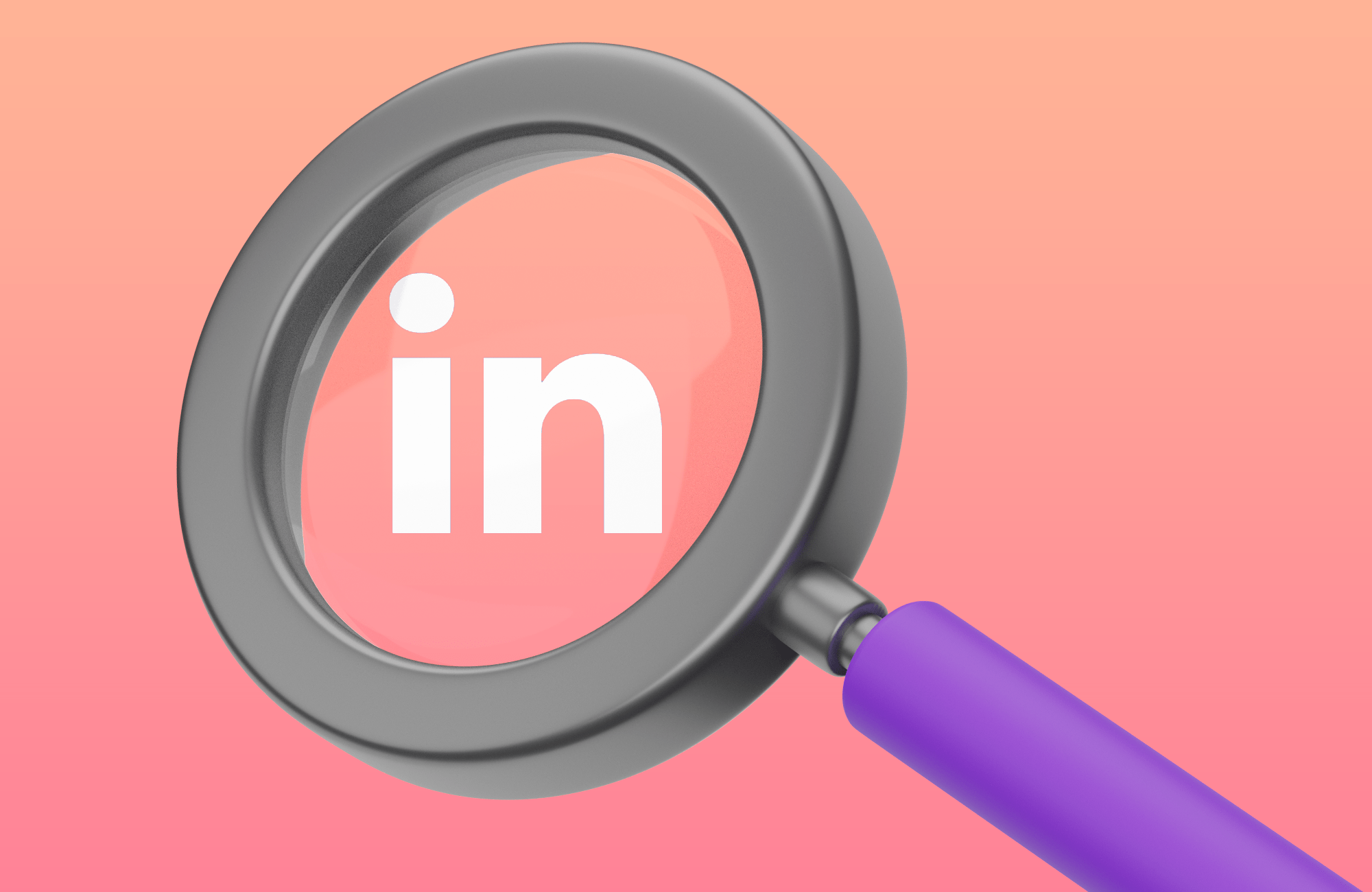Did you know that LinkedIn is the largest professional network in the world? Additionally, LinkedIn, which was launched officially in 2003, now has 810 million members who are based in over 200 territories and countries around the globe.
Considering how big LinkedIn has become over the years, it’s important to know how to search, track, and reach prospects, using tools such as LinkedIn Sales Navigator.
However, if you don’t know how to use LinkedIn and tools like Sales Navigator to do this, you might be feeling stressed when it comes to getting prospects from this professional network.
Fortunately, in this article, we’ll go over how to search, track, and reach thousands of prospects on LinkedIn, using your total addressable market (TAM) and more.
Finally, you can get more prospects, making your business more successful than ever. Read on to learn more.
Step 1: Search Your TAM on LinkedIn by Using LinkedIn Sales Navigator
To get started, you need to search your total addressable market, or TAM. To do this, you have to use LinkedIn Sales Navigator. Go into the Sales Navigator search, and then hover your cursor over the “Advanced tab.”
Then, click on “Search for Leads.” A window will pop up when you do this. When it does, make the “Geography” region “United States” and the “Title” “Marketing Manager.” When you do this, you’ll find a large number of contacts.
Step 2: Add Just One Search Filter So You Can Narrow Your Contacts
When you come across the large number of contacts in Step 1, it’s far too many people. Additionally, it likely includes people who aren’t relevant to the product or service you’re providing. For this reason, it’s important to add just one search filter so you can narrow your contacts.
For example, you could use the “Industry” search filter to choose a specific industry within it. When you choose one, you’ll be able to narrow down your contacts significantly.
Additionally, it’s important to select the right people in the “Relationship” filter. This is because you’re running a LinkedIn add connection campaign.
So, in this filter, ensure you aren’t inviting 1st-degree connections. However, make sure you select Group members, as well as 3rd and 2nd-degree connections.
Step 3: Use an Outreach Tool So You Can Track Your Contacts on LinkedIn
Once you’ve used LinkedIn Sales Navigator to search your TAM and added a search filter to narrow down the contacts you’ve made (as well as using the “Relationship” filter), it’s time to start tracking the contacts you’ve made.
Chances are, the number of contacts you’ve made by going through Steps 1 and 2 is around 10,000.
You’ll certainly be able to reach out to around 10,000 contacts, but you’ll only be able to do so if you split that number into lists that are smaller. These smaller lists should not consist of over 1,000 contacts.
To do this, you can add additional filters so you can narrow the number. However, before doing this, you should put your data into an outreach tool or CRM.
This way, you can keep track and automatically update LinkedIn connections and track them.
An example of an outreach tool you can use is Salesflow. Sales Navigator is also a really good tool where you can have lists continuously update.
To do this effectively, use the search filters you used in Sales Navigator to organize the data (along with contacts number).
When you look at your information, you should see it split up into categories such as, “Job Title,” “Geography,” “Industry,” “Employees,” and “Contacts.”
Step 4: Narrow the List More With Geography
Once you’ve put your information into an outreach tool or CRM, it’s time to narrow the list more with geography. This will narrow down your list closer to 1,000. Note that this is the number you’ll get even if you don’t change anything else on Sales Navigator.
Step 5: Make Small Geographical Units
To complete this step, repeat Step 4 for each region you want to end up targeting on LinkedIn. Then, input these contact numbers for each region into your outreach tool or CRM. These numbers would be where you keep information for “Contacts.”
As you do this, you’ll eventually have enough regions that the number of contacts of all of their contact numbers added up is around 10,000.
However, it will be much more manageable for you to pull all this off because in each set of information you have based on the region you’ll have around 1,000 contacts.
You can keep going until you reach the total number (or close to it) that you arrived at in Step 3.
What’s great about setting up your information in this way is that you can make it more scalable.
You can add in more industries or pick other regions. Additionally, you won’t end up with the problem of targeting the same contact twice.
As you can see, by using a strategy like this one, you can start generating leads on LinkedIn.
Step 6: Assign Campaign Numbers
Now, it’s time to assign campaign numbers. To do this, take each set of data that has 1,000 contacts or less and assign it a campaign number. For example, say one of your regions has 999 contacts. In this case, you can assign it campaign number 1.
If two other regions total to just under 1,00 contacts, they can make up campaign number 2. So, for example, if regions B and C have 555 and 400 respectively, they can make up campaign number 2.
Step 7: Add an Additional Search Filter if Necessary
If you’ve noticed that one of your regions still has too many contacts in it (more than 1,000), then you’ll have to add a search filter. In this case, you can add a filter for the company size (i.e., company headcount filter).
Not sure how to get started? Not to worry! LinkedIn provides several standard size ranges that are based on the employee number of each company.
To choose the right one, select the company size that you think is most relevant to you. For example, if you tend to work with larger companies, you can select all company sizes except for “1-10” and “Self Employed.”
Once you’ve done this, you can split up each of these into its own campaign number. This will make it easier to manage your campaigns even if there are many contacts within one region.
Step 8: Transform Your Information to Make It Actionable
Now, you have a large number of contacts to get in touch with who are split up into several manageable campaigns. But the next step, of course, is taking steps so that you can improve your LinkedIn lead generation.
To do this, you must transform your information to make it actionable. What does this mean? You have to set it up so you can monitor these campaigns. For example, say you manage a team at your business.
In this case, you assign a different team member to a different campaign. Depending on the size of your team (if it’s small, for example), you might want to assign multiple campaigns to the same person.
Once you’ve assigned campaigns to team members, you can use strategies to track these campaigns. For example, you can constantly update each “campaign status.”
This way, you can track both pending and active campaigns. You can also put in information such as end date, start date, and comments.
Outreach tools and CRMs can help with this process, too. With an outreach tool like Salesflow, you can run multiple campaigns from the platform simultaneously.
It also provides an interface that makes it easy to manage all your different campaigns. This solution also integrates into your business's CRM.
As a result, you can do all of the above, like assigning, running, and updating campaigns, easily.
Now, you’re finally ready to experience many of the benefits of LinkedIn as you run your campaigns!
Want to Learn More?
Now that you’ve learned how to search, track, and reach thousands of prospects on LinkedIn by using a tool such as LinkedIn Sales Navigator, you might want to learn more about using LinkedIn. Maybe you want to learn more strategies for how to make sales with LinkedIn, for example.
Whatever you want to learn, we can help. At Salesflow, we’re experts when it comes to LinkedIn.
We also have a LinkedIn automation tool that makes it easier to generate sales from LinkedIn. Schedule a call with one of our LinkedIn automation experts now to learn more.


.svg)

.png)
